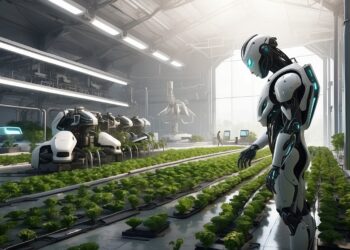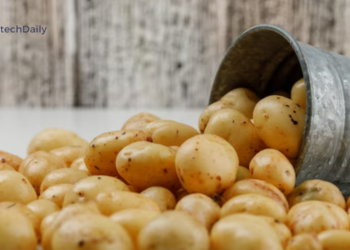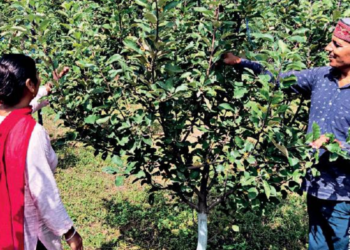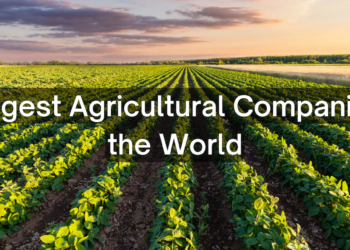Artificial Intelligence has redefined farming over the years and technological advances have affected the agriculture industry in more ways than one.
Agriculture is the mainstay occupation in many countries worldwide and with the rising population, which as per UN projections will increase from 7.5 billion to 9.7 billion in 2050, there will be more pressure on land as there will be only an extra 4% of the land, which will come under cultivation by 2050.
This means that farmers will have to do more with less. According to the same survey, food production will have to increase by 60% to feed an additional two billion people. However, traditional methods are not enough to handle this huge demand. This is driving farmers and agro companies to find newer ways to increase production and reduce waste.
Main Highlights
- Artificial Intelligence (AI) is steadily emerging as part of the agriculture industry’s technological evolution.
- The challenge is to increase global food production by 50% by 2050 to feed an additional two billion people.
- The AI-powered solutions will also improve quantity, and quality and ensure faster go-to-market for crops.
1. Using AI for spraying chemicals
Every day, farms produce thousands of data points on temperature, soil, usage of water, weather condition, etc. With the help of artificial intelligence and machine learning models, this data is leveraged in real-time for obtaining useful insights like choosing the right time to sow seeds, determining crop choices, hybrid seed choices to generate more yields, and the like.
AI systems are helping to improve the overall harvest quality and accuracy – known as precision agriculture. AI technology helps in detecting diseases in plants, pests, and poor nutrition in farms. AI sensors can detect and target weeds and then decide which herbicide to apply within the region. This helps in reduced usage of herbicides and cost savings.
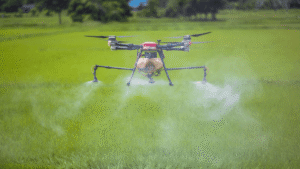
Many technological companies developed robots, which use computer vision and artificial intelligence to monitor and precisely spray on weeds. These robots are able to eliminate 80% of the volume of the chemicals normally sprayed on the crops and bring down the expenditure of herbicide by 90%.
These intelligent AI sprayers can drastically reduce the number of chemicals used in the fields and thus improve the quality of agricultural produce, and bring in cost efficiency.
2. Using AI for Predictive Analysis
The difference between a profitable year and a failed harvest is just the timely information on a simple data point of the timing of sowing the seed. To combat this, scientists of ICRISATused a predictive analytics tool to arrive at a precise date for sowing the seeds to obtain the maximum yield. It even gives insights on soil health and fertilizer recommendations in addition to a 7-day weather forecast.
For many farmers, the biggest worry is the price fluctuation of the crop. Due to unstable prices, farmers are never able to plan a definite production pattern. This problem is highly prevalent in crops like tomatoes that have very limited shelf time. Companies are using satellite imagery and weather data to assess the acreage and monitor crop health on a real-time basis.
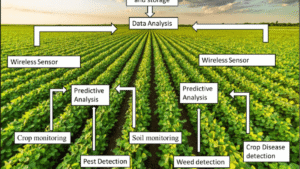
With the help of technologies like big data, AI, and machine learning, companies can detect pest and disease infestations, estimate tomato output and yield, and forecast prices. They can guide the farmers and governments on future price patterns, demand level, type of crop to sow for maximum benefit, pesticide usage, etc.
Innovative startups are using AI in the field of agriculture. A Berlin-based agricultural tech startup3developed a multi-lingual plant disease and pest diagnostic app, which uses various images of the plant to detect diseases; a smartphone collects the image that is matched with a server image and then a diagnosis of that particular disease is provided, and applied to the crop using intelligent spraying technique.
In this way, the application uses AI and ML to solve plant diseases. Over seven million farmers have downloaded this app and it has helped identify over 385 crop diseases among field crops, fruits, and vegetables.
3. For Harvesting
Have you ever wondered who actually picks the produce from the agricultural land? Well, in most cases, it is not the traditional farm worker but robotic machines that are capable of doing bulk harvesting with more accuracy and speed that are responsible for getting the product on your kitchen table. These machines help improve the size of the yield and reduce waste from crops being left in the field.

Many companies are working on improving agricultural efficiencies. There are products like an autonomous strawberry-picking machine1 and a vacuum apparatus that can harvest mature apples from trees. These machines use sensor fusion, machine vision, and artificial intelligence models to identify the location of the harvestable produce and help pick the right fruits.
Agriculture is the second largest industry after Defense where the service robots market has been deployed for professional use. The International Federation of Robotics estimates that as many as 25,000 agricultural robots have been sold —matching the number used for military purposes.



